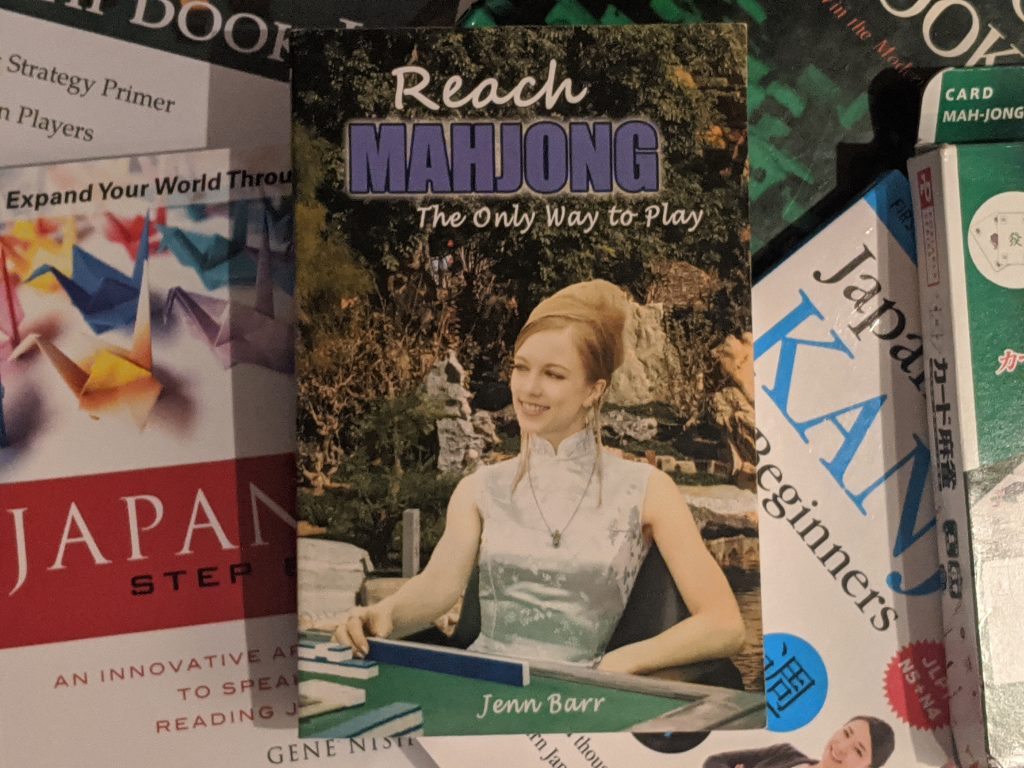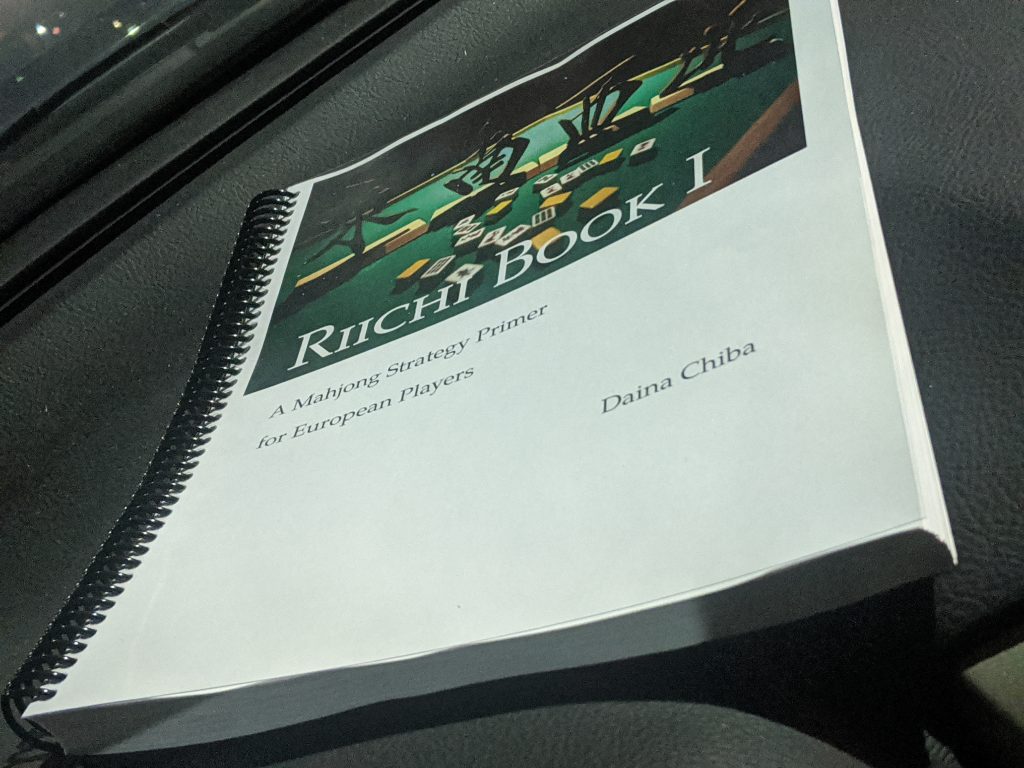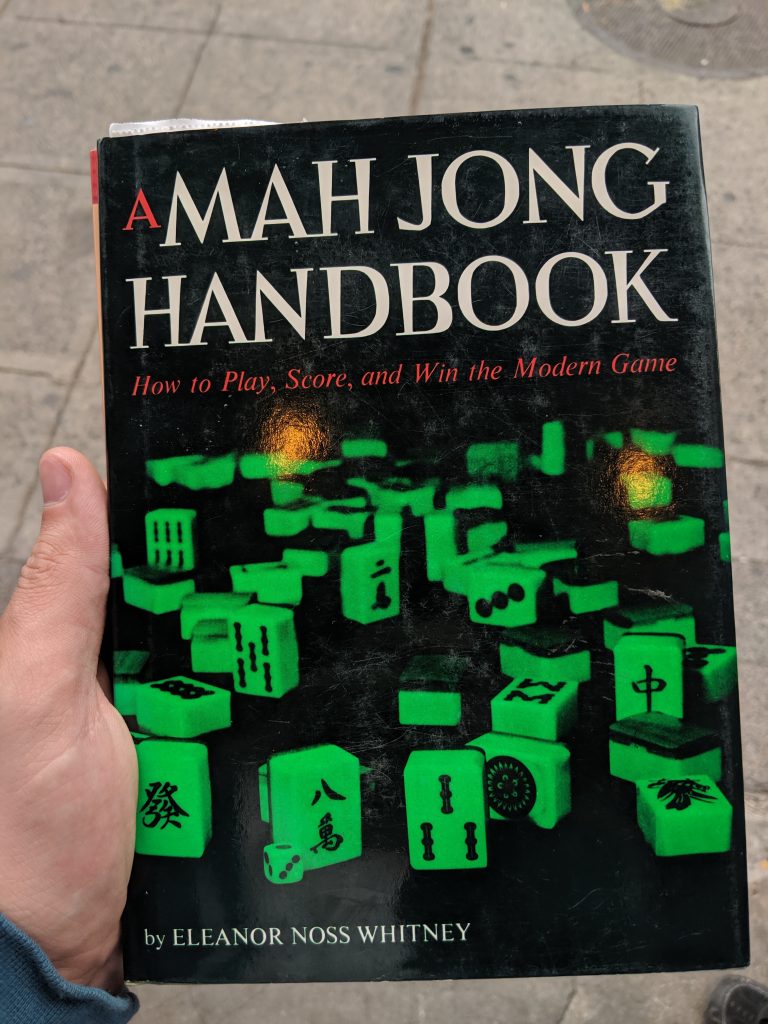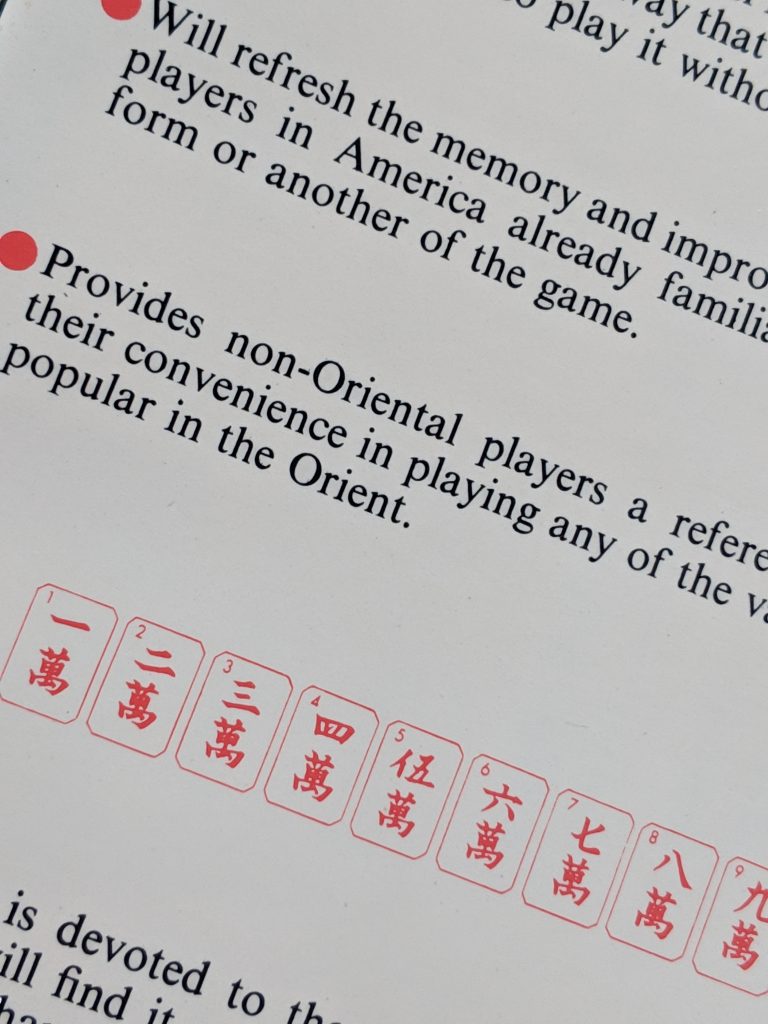One of the biggest hurdles people face when they want to learn how to play mahjong, or advance beyond the basics, is finding good information. Rather, there’s more information out there than one person could ever hope to read, but almost none of that is in English. That’s not to say that there isn’t any, it’s just a bit scattered and hard to find, so I’ve decided to compile the resources I use here so that maybe other people can also benefit from them.
Books
Books are a fantastic medium for absorbing information about mahjong, but you’re unlikely to find any that cover Japanese mahjong specifically. Most likely, you’ll find books that cover American “mah-jongg”, or if you’re lucky, you’ll find a book that covers multiple versions. The common issue with both of these kinds of books is that they do not focus on riichi mahjong exclusively, so you’ll have to learn multiple styles simultaneously, and the vocabulary used is usually from American mahjong, which can be immensely confusing if you’re already used to Japanese terms, or want to play with people who only know the Japanese terms.
A Mah Jong Handbook (1964)
I’ll preface this by saying that, while I do own this book, I don’t recommend it as your first introduction to mahjong. While the illustrations and explanations of the game’s mechanics and strategy are sound, the vocabulary is decidedly American, and some of the rules have changed in the 65 years since this book was originally published. For example, it talks about the tenbou (points sticks) being worth 10, 100, and 500 points each, and should add up to 2,000 points total according to the Japanese Mah Jong Association’s current (at the time) rules. Similarly, the scoring system is also about 1/10 of the value we see in modern mahjong. For me, it was a curiosity to add to my collection, but I can’t recommend this as a study reference.
Reach Mahjong: The Only Way to Play
Written by fellow Seattle native and Japanese Professional Mahjong League member Jenn Barr, this is perhaps the only mahjong book worth buying if you can’t read Japanese. From its full-color illustrations of gameplay mechanics, to its scoring charts, to its quizzes, this book is an excellent resource for learning the basics of the game. It is also readily available on Amazon, making it easy to find. All that said, my one gripe about the book is that, because Jenn grew up on American Mahjong, all of the vocabulary is also American, with terms like “peace hand” (tanyao), “all sets” (toitoi), and “pure outside hand” (junchan). This might not be an issue if you’re learning the rules for the first time, but as someone who already knew how to play and wanted the book as a refresher course on core mechanics, it was incredibly distracting having to look up what these hands where in the appendix.

Riichi Book 1
Probably the single best English reference material for Japanese mahjong, Daina Chiba’s Riichi Book 1 assumes you already have an understanding for basics of the game and dives straight into strategies that will help you better understand how tile efficiency affects your hand, how to play offensively and defensively, understanding when you should riichi, and other situational problems you’ll find yourself in. Riichi Book 1 is designed to cover beginner and intermediate strategies, while book 2 (supposedly coming out at the end of 2019) covers advanced strategies. To top it all off, the book is available as a free PDF under a Creative Commons license, meaning I was able to print a physical copy for about $25 at my local print shop.

Videos
YouTube is where I learned how to play mahjong, and it’s still where I suggest people learn to play since books, as an introduction to the game, can be a bit dry.
How to Play Japanese Mahjong – A Comprehensive Walkthrough by HanaYoriUta
This is the video that taught me how to play mahjong. HanaYoriUta’s relaxing, well paced, and comprehensive introduction to the fundamentals of mahjong was a godsend. Of any other resource, this is the one I recommend most highly if you’re interested in learning to play. A word of warning, though: It’s a very, very long video. The original version of this video (the one I learned on) was broken into multiple segments that were a bit easier to digest, but they have since been combined into a single three and a half hour video. Still, it’s well worth the time as the explanations are well worded and thorough without being too complicated.
Light Grunty
Light Grunty, a member of California’s Los Angeles Pride of Mahjong (LAPOM) club, has started a massive catalog of mahjong videos, starting with basic gameplay to beginner strategies. If HanaYoriUta’s guide is a little overwhelming, or you’re looking for some additional strategies, this is an excellent option.
Play Like a Pro (Japanese Professional Mahjong League)
Recently, the Japanese Professional Mahjong League (JPML) started uploading English-language content featuring Jenn Barr and Garthe Nelson, both of whom are Americans who are members of the JPML. Each video is focused on a particular aspect of mahjong strategy, first described in Japanese, then translated by Jenn and Garthe. At the time of writing, there are currently eight parts (nine total videos). The first two videos, Secrets of Pinfu Part 1 & 2, are in the wrong order in their playlist, so keep that in mind if you decide to check out the videos.


One Reply to “English-Language Mahjong Resources”